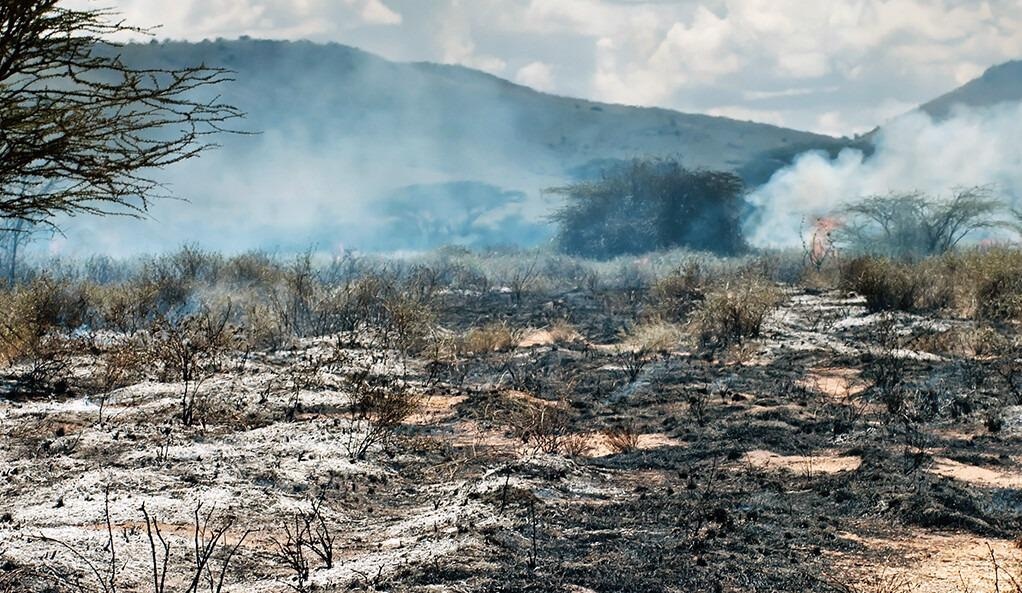In the fight against climate change, one suggested strategy is to raise tree cover in the world’s savannas, either via the planting of new trees or fire suppression. This is done to increase the uptake of carbon dioxide present in the air.

Image Credit: Yale University
But a new Yale-led study of African savannas indicates this method is less effective compared to what was earlier estimated.
Increasing tree cover in savannas, whether via afforestation or fire suppression, is unlikely to yield the substantial gains in ecosystem carbon storage that have been advertised.
Carla Staver, Study Senior Author and Associate Professor, Ecology and Evolutionary Biology, Faculty of Arts and Sciences, Yale University
Staver is also an associate director of the Yale Institute for Biospheric Studies.
The study was published on March 17th, 2022, in the journal Nature.
Savannas cover around a fifth of the Earth’s land surface. Since they have fewer trees compared to forests, they have been highly targeted for their ability to capture carbon. Few studies showed that afforesting the savannas of the world could capture around 280 tons of carbon per hectare. It is a number that assumes that tropical savannas would store carbon as that of tropical forests.
A research group headed by Yong Zhou, a G. E. Hutchinson Environmental Postdoctoral Fellow in Staver’s laboratory and study lead author, questioned a few of the projected climate benefits of afforestation in tropical savannas, which accounts for more than half of the fire-related carbon emissions of the planet
For the study, the research team utilized data collected from a decades-old experiment at Kruger National Park in South Africa — where for 68 years researchers have investigated how fire management impacts the landscape. This is to better comprehend if increased tree cover from fire suppression helps increase carbon sequestration.
For the amount of carbon stored in savannas to be quantified under different fire regimes, the Yale researchers, together with researchers from Harvard University, the US Forest Service, and Kruger National Park — utilized direct measurements of tree and grass biomass taken from the experiment. This was integrated with remote sensing methods and chemical analysis of soil samples.
The good news was that even frequently burned savannas tend to store more carbon in soil and roots compared to what was previously thought, even when prescribed burns occur each year. This finding stresses the significance of natural savannas — which fall into the extensive threat from land use conversion — for storing carbon.
However, the study also discovered that increasing tree cover via fire suppression captured much less carbon compared to what was previously estimated. Additionally, despite a 78% increase in tree cover, this strategy captured just 35% more carbon, relating to total gains of around 23 tons per hectare.
Such new, direct estimates from Kruger National Park indicate that the carbon sequestration potential of savannas is below 10% of earlier estimates.
Previous models relied on sparse data to promise a very large carbon storage benefit to increasing tree cover in savannas. But our direct measures show that these were not good assumptions.
Carla Staver, Study Senior Author and Associate Professor, Ecology and Evolutionary Biology, Faculty of Arts and Sciences, Yale University
Staver and Zhou highlighted that such findings need to be replicated in other savanna areas around the world.
Zhou stated, “More measurements from more savanna sites are still needed.”
But the findings are substantial. We need to recalibrate our assessments of the role savannas play in the global carbon cycle. And we should not be relying on afforestation to save us from accelerating human-driven carbon emissions.
Carla Staver, Study Senior Author and Associate Professor, Ecology and Evolutionary Biology, Faculty of Arts and Sciences, Yale University